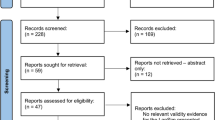Abstract
Background
Simulator performance is measured by metrics, which are valued as an objective way of assessing trainees. Certain procedures such as laparoscopic suturing, however, may not be suitable for assessment under traditionally formulated metrics. Our aim was to assess if our new metric is a valid method of assessing laparoscopic suturing.
Study design
A software program was developed to order to create a new metric, which would calculate the percentage of time spent operating within pre-defined areas called “zones.” Twenty-five candidates (medical students N = 10, surgical residents N = 10, and laparoscopic experts N = 5) performed the laparoscopic suturing task on the ProMIS III® simulator. New metrics of “in-zone” and “out-zone” scores as well as traditional metrics of time, path length, and smoothness were generated. Performance was also assessed by two blinded observers using the OSATS and FLS rating scales. This novel metric was evaluated by comparing it to both traditional metrics and subjective scores.
Results
There was a significant difference in the average in-zone and out-zone scores between all three experience groups (p < 0.05). The new zone metrics scores correlated significantly with the subjective-blinded observer scores of OSATS and FLS (p = 0.0001). The new zone metric scores also correlated significantly with the traditional metrics of path length, time, and smoothness (p < 0.05).
Conclusion
The new metric is a valid tool for assessing laparoscopic suturing objectively. This could be incorporated into a competency-based curriculum to monitor resident progression in the simulated setting.







Similar content being viewed by others
References
Aggarwal R, Grantcharov TP, Darzi A (2007) Framework for systematic training and assessment of technical skills. J Am Coll Surg 204:697–705
Satava RM, Gallagher AG, Pellegrini CA (2003) Surgical competence and surgical proficiency: definitions, taxonomy, and metrics. J Am Coll Surg 196:933–937
Palter VN, Grantcharov TP (2010) Simulation in surgical education. CMAJ 182:1191–1196
Broe D, Ridgway PF, Johnson S et al (2006) Construct validation of a novel hybrid surgical simulator. Surg Endosc 20:900–904
Gilliam AD (2009) Construct validity of the ProMIS laparoscopic simulator. Surg Endosc 23:1150
Neary PC, Boyle E, Delaney CP et al (2008) Construct validation of a novel hybrid virtual-reality simulator for training and assessing laparoscopic colectomy; results from the first course for experienced senior laparoscopic surgeons. Surg Endosc 22:2301–2309
Boyle E, Al-Akash M, Gallagher AG et al (2011) Optimising surgical training: use of feedback to reduce errors during a simulated surgical procedure. Postgrad Med J 87:524–528
Botden SM, de Hingh IH, Jakimowicz JJ (2009) Meaningful assessment method for laparoscopic suturing training in augmented reality. Surg Endosc 23:2221–2228
Szabo Z, Hunter J, Berci G et al (1994) Analysis of surgical movements during suturing in laparoscopy. Endosc Surg Allied Technol 2:55–61
Allen JW, Rivas H, Cocchione RN, Ferzli GS (2003) Intracorporeal suturing and knot tying broadens the clinical applicability of laparoscopy. JSLS 7:137–140
Stefanidis D, Hope WW, Korndorffer JR Jr et al (2010) Initial laparoscopic basic skills training shortens the learning curve of laparoscopic suturing and is cost-effective. J Am Coll Surg 210:436–440
Ende J (1983) Feedback in clinical medical education. JAMA 250:777–781
Snyder CW, Vandromme MJ, Tyra SL et al (2011) Effects of virtual reality simulator training method and observational learning on surgical performance. World J Surg 35:245–252
Xeroulis GJ, Park J, Moulton CA et al (2007) Teaching suturing and knot-tying skills to medical students: a randomized controlled study comparing computer-based video instruction and (concurrent and summary) expert feedback. Surgery 141:442–449
Mason JD, Ansell J, Warren N, Torkington J (2013) Is motion analysis a valid tool for assessing laparoscopic skill? Surg Endosc 27:1468–1477
Disclosures
Christina E Buckley, MB BCh BAO, Dara O Kavanagh, MCh, FRCS, Emmeline Nugent, MD, MRCS, Donncha Ryan, Oscar J Traynor, MCh, FRCS and Paul C Neary, MD, FRCS have no conflict of interest.
Author information
Authors and Affiliations
Corresponding author
Rights and permissions
About this article
Cite this article
Buckley, C.E., Kavanagh, D.O., Nugent, E. et al. Zone calculation as a tool for assessing performance outcome in laparoscopic suturing. Surg Endosc 29, 1553–1559 (2015). https://doi.org/10.1007/s00464-014-3840-z
Received:
Accepted:
Published:
Issue Date:
DOI: https://doi.org/10.1007/s00464-014-3840-z




